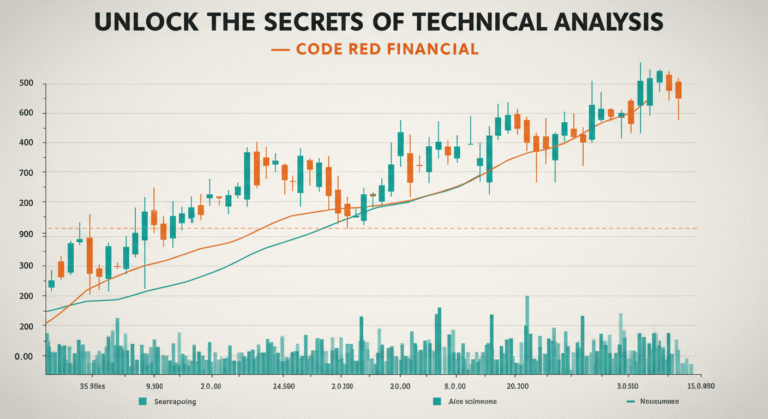Introduction to Emergency Funds
An emergency fund is a dedicated reserve of money set aside to cover unforeseen expenses or financial emergencies. It serves as a crucial element of personal financial planning, providing a financial safety net that can prevent the need to rely on high-interest loans or credit cards. The primary purpose of an emergency fund is to ensure that unexpected costs, such as medical emergencies, car repairs, or sudden job loss, do not derail your long-term financial stability.
In essence, an emergency fund acts as a buffer against life’s uncertainties. Without such a fund, individuals may find themselves in precarious financial situations, forced to borrow money at exorbitant interest rates or deplete savings intended for other goals. This financial cushion not only helps to manage unexpected expenses but also reduces stress and provides peace of mind, knowing that you have a plan in place for the unforeseen.
Building an emergency fund requires discipline and a clear understanding of your financial needs. Financial experts typically recommend saving three to six months’ worth of living expenses. However, the exact amount can vary based on individual circumstances, such as job stability, family size, and existing financial obligations. The key is to start small and gradually build up the fund over time, ensuring that it remains accessible and separate from other savings or investment accounts.
The importance of having an emergency fund cannot be overstated. It is not just about having money set aside; it is about fostering a mindset of preparedness and resilience. By planning for the unexpected, you can safeguard your financial future and mitigate the impact of sudden financial shocks. In the following sections, we will delve deeper into the various aspects of emergency funds, including how to build one, where to keep it, and the broader benefits it offers to your overall financial health.
Unexpected Expenses: Real-Life Scenarios
It’s a common misconception that unexpected expenses only happen to others, but the reality is that they can strike anyone at any time. Life is unpredictable, and many situations can arise that require immediate financial attention. These scenarios often come without warning, making an emergency fund indispensable.
Consider medical emergencies. According to a survey by the Kaiser Family Foundation, nearly 40% of Americans have difficulty covering an unexpected medical bill of $400 or more. A sudden illness or accident can lead to hefty medical expenses, including hospital stays, surgeries, or specialized treatments. For instance, a broken leg can cost up to $7,500 if surgery is needed, putting significant strain on those without sufficient savings.
Car repairs are another common unexpected expense. The American Automobile Association (AAA) reports that the average cost of a car repair is between $500 and $600. Breakdown of essential components like the transmission or engine can escalate costs into the thousands. Without an emergency fund, such expenses can severely disrupt your financial stability.
Job loss is a particularly devastating scenario. The U.S. Bureau of Labor Statistics data shows that the average duration of unemployment is about 22 weeks. During this period, individuals still need to manage ongoing expenses like rent, utilities, and groceries. An emergency fund can provide a critical financial cushion, allowing one to focus on job searching without the added stress of immediate financial pressure.
Urgent home repairs are another unforeseen financial burden. Essential systems like plumbing, heating, or roofing can fail unexpectedly. The National Association of Home Builders estimates that homeowners spend an average of $2,000 annually on home maintenance, with emergency repairs often costing significantly more. For example, replacing a roof can easily exceed $10,000, a daunting figure for those unprepared.
These examples underscore the importance of financial preparedness. Unexpected expenses are not a matter of “if” but “when.” Having an emergency fund is not just a safety net; it’s a necessity that ensures financial resilience in the face of life’s uncertainties.
The Pitfalls of Relying on Credit
When faced with an unexpected financial crisis, many individuals turn to credit as a quick solution. However, this approach often leads to a cascade of financial challenges, exacerbating the initial problem. One of the most significant pitfalls of relying on credit is the rapid accumulation of debt. In emergencies, people tend to use credit cards or take out loans without fully considering the long-term repercussions. This can quickly lead to a situation where the debt snowballs, becoming increasingly difficult to manage.
High-interest rates associated with credit cards and personal loans add another layer of financial strain. These rates can be exorbitant, especially for those with less-than-perfect credit scores. Even a small amount borrowed can grow substantially due to compound interest, resulting in monthly payments that can eat away at your budget. Over time, this can severely limit your financial flexibility, making it harder to cover everyday expenses, let alone save for future needs.
Moreover, the long-term impact of relying on credit for emergencies can be devastating. The stress of mounting debt can affect your mental well-being, and the constant pressure to make payments can impair your ability to focus on other financial goals. Additionally, high levels of debt can negatively impact your credit score, making it more difficult and expensive to borrow in the future. This creates a vicious cycle where you might find yourself perpetually reliant on credit, further entrenching your financial instability.
In contrast, having an emergency fund offers a much more stable and sustainable solution. With savings set aside, you can handle unexpected expenses without the need to incur debt. This not only preserves your financial health but also provides peace of mind, knowing that you have a safety net in place. By avoiding the pitfalls of relying on credit, you can maintain better control over your financial future, ensuring that emergencies do not derail your long-term plans.
How Much Should You Save?
Determining the appropriate amount to save in an emergency fund is a crucial step in achieving financial preparedness. Financial experts commonly recommend saving an amount equivalent to three to six months’ worth of living expenses. This range offers a buffer to cover unforeseen events such as job loss, medical emergencies, or unexpected home repairs, providing peace of mind and financial stability.
The specific amount you should save depends on various factors unique to your financial situation. One of the primary considerations is job stability. If you are employed in a stable industry or have a secure position, you might lean towards the lower end of the recommended range. Conversely, if your job is less secure or you work in a volatile industry, it would be prudent to aim for the higher end or even beyond six months’ worth of expenses.
Another significant factor influencing the ideal size of your emergency fund is the number of dependents you have. Individuals with families or dependents typically face higher monthly expenses and potential emergencies, such as healthcare needs or educational costs. Therefore, they should consider saving a larger amount to ensure sufficient coverage for all members of the household.
Additionally, personal financial obligations, such as mortgage payments, car loans, and recurring bills, should be factored into your emergency fund target. Those with higher fixed expenses should aim to save more to maintain their financial commitments during unforeseen circumstances. On the other hand, individuals with fewer obligations may find a smaller emergency fund sufficient.
It’s also essential to customize your savings based on your lifestyle and spending habits. A thorough analysis of your monthly budget, including discretionary spending, can help you estimate a realistic figure for your emergency fund. Regularly reassessing and adjusting your savings goal as your financial situation evolves will ensure that you remain adequately prepared for any emergencies that may arise.
Building Your Emergency Fund: Tips and Strategies
Establishing an emergency fund is a crucial step towards achieving financial preparedness. To start building your emergency fund, the first step is to create a realistic budget. Begin by analyzing your monthly income and expenses to identify areas where you can cut back. Essential expenses such as rent, utilities, and groceries should be prioritized, while discretionary spending on dining out, entertainment, and non-essential shopping can be reduced significantly.
Once you have a clear picture of your financial situation, set a specific savings goal for your emergency fund. Financial experts typically recommend saving three to six months’ worth of living expenses, but starting with a smaller, more attainable goal can help build momentum. For instance, aim to save $1,000 initially and gradually increase this amount as your financial situation improves.
To make saving easier, consider setting up automatic transfers from your checking account to a designated savings account. Automating your savings ensures consistency and minimizes the temptation to spend the money elsewhere. Many banks offer tools to help you set up these automatic transfers on a weekly, bi-weekly, or monthly basis.
Choosing the right place to keep your emergency fund is also essential. High-yield savings accounts are an excellent option due to their liquidity and accessibility, along with the added benefit of earning interest. Unlike traditional savings accounts, high-yield accounts offer higher interest rates, allowing your money to grow more effectively over time. Ensure that the account you choose is insured by the FDIC (Federal Deposit Insurance Corporation) to safeguard your funds.
By consistently contributing to your emergency fund and making strategic financial decisions, you can build a robust safety net to protect yourself against unforeseen expenses. This proactive approach to financial preparedness not only provides peace of mind but also reinforces healthy financial habits that can benefit you in the long term.
Maintaining and Using Your Emergency Fund Wisely
Once you have successfully established an emergency fund, the next crucial step is to maintain it effectively. This involves a disciplined approach to both replenishing and using your fund. An emergency fund is not a one-time setup; it requires ongoing attention and commitment.
First and foremost, it is essential to replenish your emergency fund as soon as possible after any withdrawal. The primary goal is to ensure that your financial safety net remains intact for future unforeseen expenses. One effective strategy is to allocate a portion of your monthly income specifically for this purpose. By consistently setting aside a fixed amount, you can gradually restore the fund to its original level. Additionally, consider redirecting any windfalls, such as tax refunds or bonuses, directly into your emergency fund. This proactive approach ensures that you are always prepared for unexpected financial challenges.
Equally important is discerning what constitutes a legitimate emergency. An emergency fund should be reserved for true emergencies, such as urgent medical expenses, significant car repairs, or sudden job loss. It is crucial to resist the temptation to dip into the fund for non-essential purchases or minor inconveniences. Distinguishing between needs and wants is key to preserving the integrity of your emergency savings. For instance, while a broken refrigerator warrants immediate attention and use of funds, upgrading to a newer model for aesthetic purposes does not.
To maintain discipline, consider setting clear guidelines for what qualifies as an emergency. Document these criteria and review them periodically to ensure they remain relevant to your current financial situation. This practice not only reinforces the purpose of the fund but also helps you stay focused on long-term financial stability.
Maintaining an emergency fund requires both strategic planning and disciplined execution. By regularly replenishing your fund and adhering to strict guidelines for its use, you can safeguard your financial future and navigate life’s uncertainties with greater confidence.







